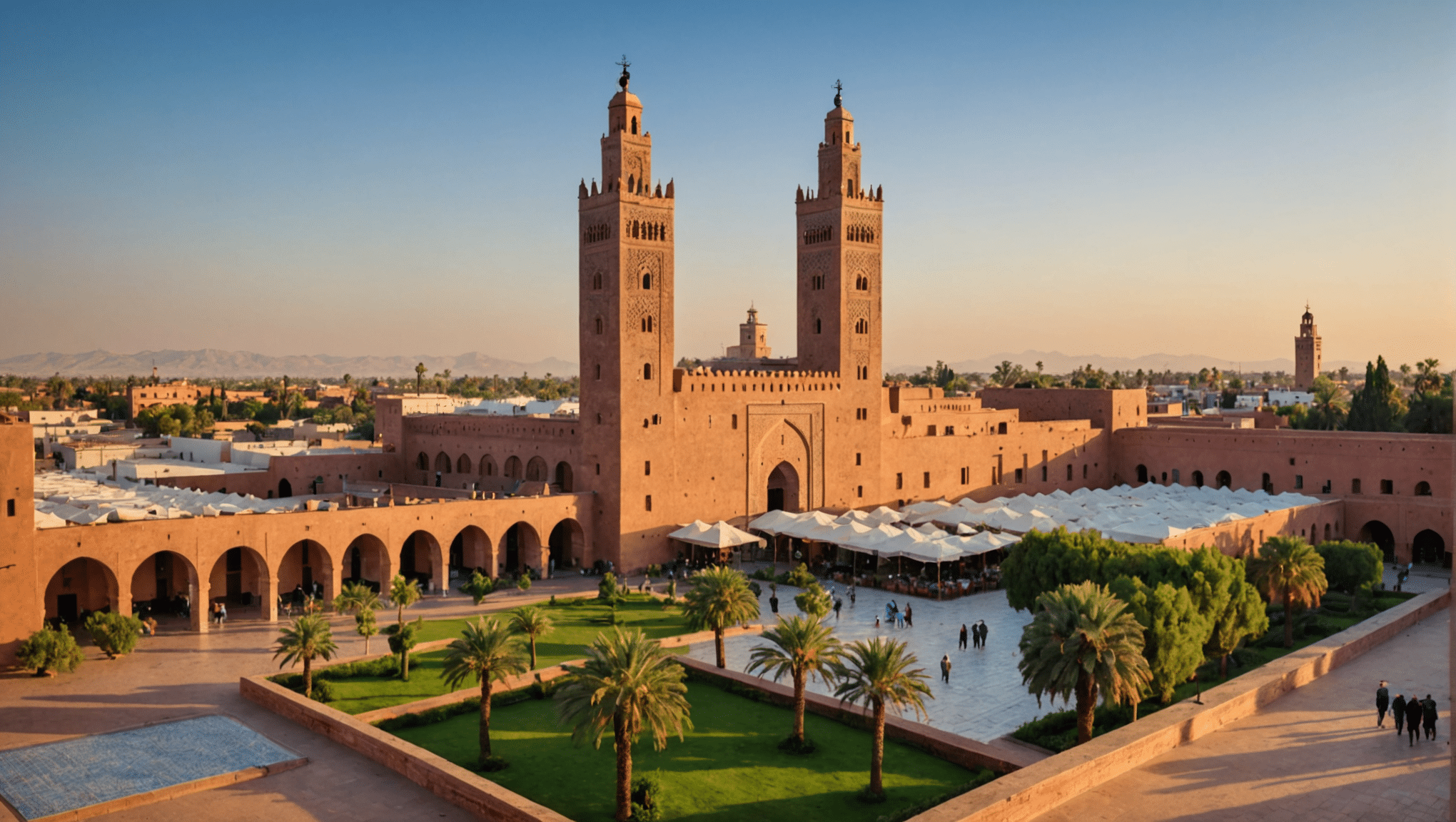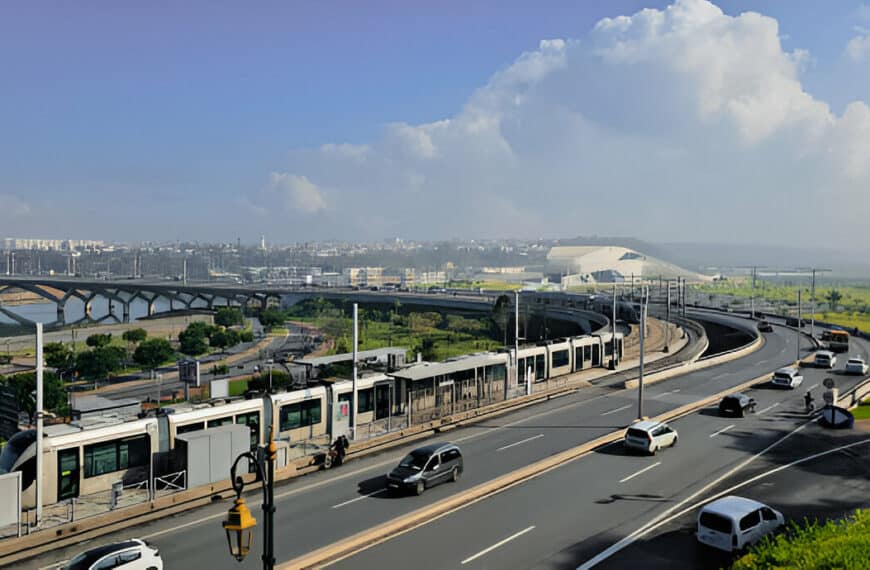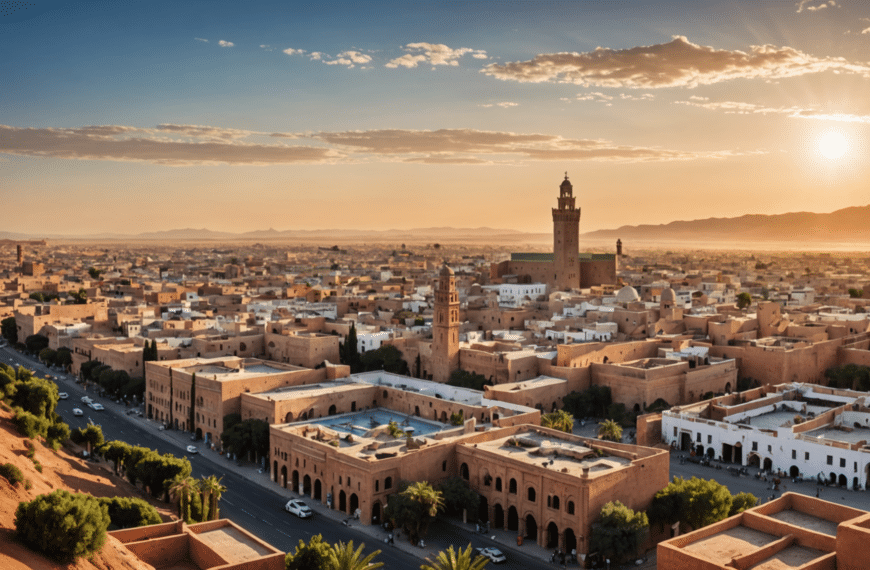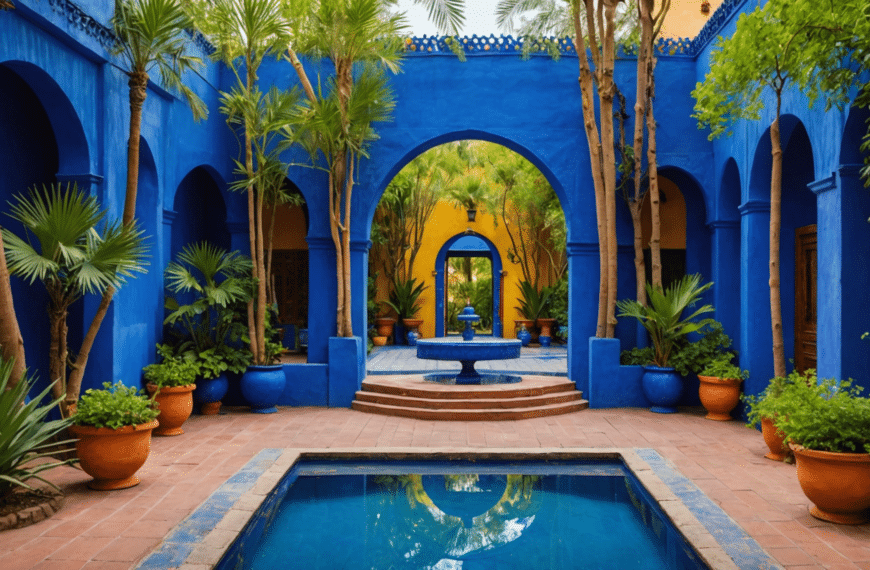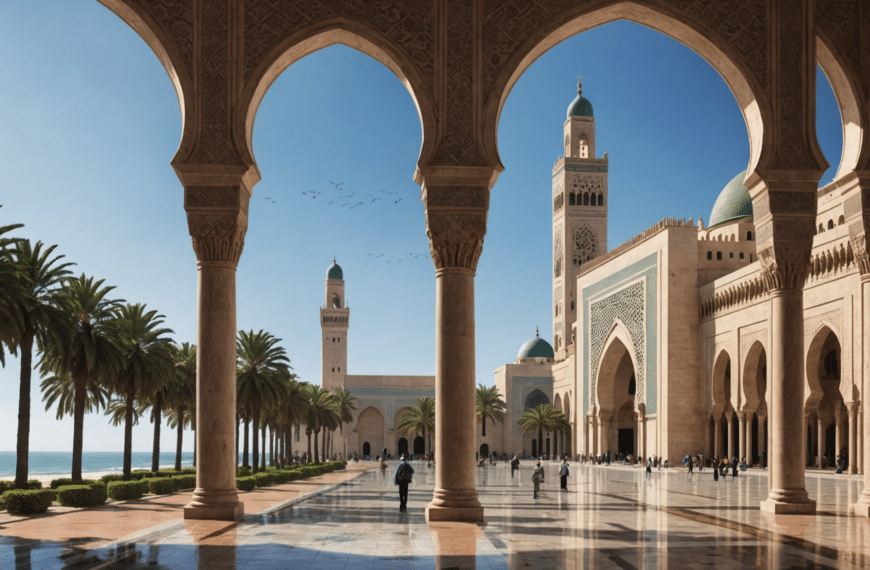The Koutoubia Mosque stands as a monumental beacon in Marrakech, not only due to its historical and architectural significance but also as a symbol of the spiritual heart of Morocco. This mosque is deeply intertwined with the cultural and religious life of the city, making it a must-visit landmark for anyone exploring Marrakech.
The Historical Significance of Koutoubia Mosque
Constructed during the Almohad period in the 12th century, the Koutoubia Mosque is named after the Arabic word for bookseller, ‘kutubiyyin’, reflecting the area’s history as a bustling marketplace for books. The mosque was built under the reign of Abd al-Mu’min, the first Caliph of the Almohad dynasty, who sought to beautify Marrakech by adding a structure that would serve both as a spiritual center and a symbol of his power. Over the centuries, it has withstood numerous events, including recent earthquakes that caused damage to several historical landmarks in Marrakech.
Architectural Marvels of Koutoubia
The architecture of Koutoubia Mosque is a splendid example of Moorish art and has inspired other buildings such as the Giralda of Seville in Spain and the Hassan Tower in Rabat. Its towering minaret, standing at 77 meters tall, is particularly noteworthy. Made from sandstone, it features six rooms one above the other, an architectural feat that showcases the ingenuity of its builders. The mosque’s layout and decorative elements such as arches, ceramic tiles, and intricate carvings reflect the artistic heritage of Morocco.
Environmental Initiatives at Koutoubia
In recent years, Koutoubia Mosque has been recognized for its efforts in environmental sustainability. It is among Morocco’s greenest mosques, incorporating energy-efficient practices that align with Islamic environmental teachings. These initiatives include using solar panels and promoting water conservation, setting a precedent for how historic sites can contribute to sustainability efforts.
Koutoubia’s Role in Modern Society
The mosque remains a central part of life in Marrakech. It not only serves as a place of worship but also as a community hub where people gather for daily prayers and special celebrations during Ramadan and other Islamic holidays. The mosque’s ability to adapt to modern needs while preserving its traditional roles is a testament to its enduring relevance in Moroccan society.
Cultural Impact and Tourism
Koutoubia Mosque is not just significant for those who practice Islam; it’s also a pivotal cultural landmark for visitors from around the world. Tourists are drawn to its grandeur and beauty, which offers insight into Morocco’s rich history and architectural traditions. While non-Muslims are not allowed inside the prayer hall, everyone can admire its exterior and explore the surrounding gardens.
- Guided tours around the mosque provide historical context and highlight architectural details.
- Photography enthusiasts find great inspiration in capturing its silhouette against Marrakech’s clear blue skies.
- Cultural festivals often take place in its vicinity, offering visitors a taste of local music and cuisine.
In essence, Koutoubia Mosque is more than just a religious site; it is a cornerstone of Moroccan heritage that continues to influence both locals and visitors alike. Its blend of historical significance, architectural beauty, commitment to sustainability, and cultural vitality makes it an enduring symbol of Marrakech’s rich tapestry.

